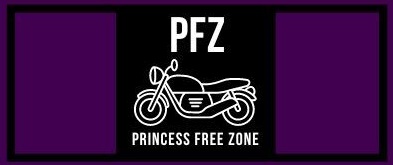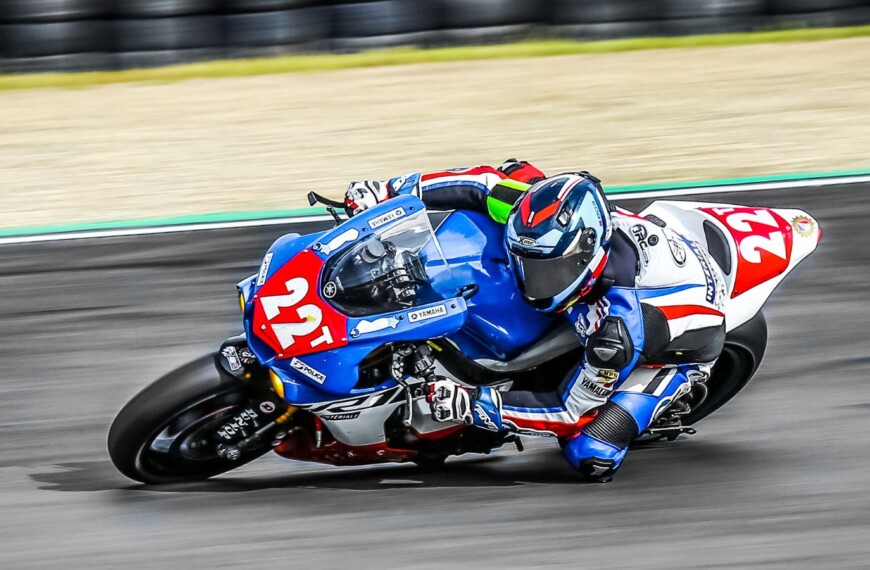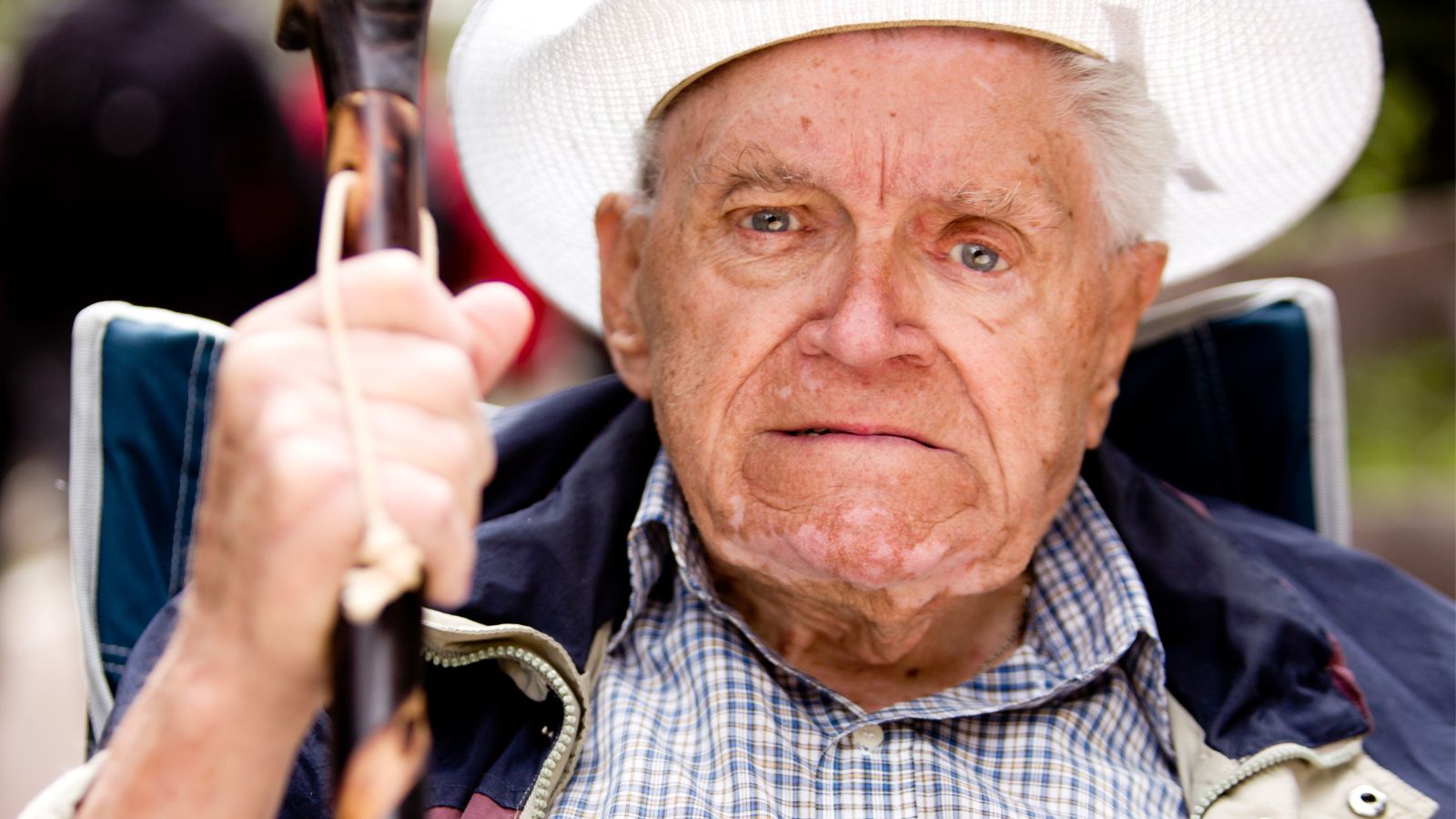The world of motorcycling has seen a significant rise in female riders over the past decade. With more women embracing the freedom and thrill of riding on two wheels, it becomes imperative to ensure they develop a strong foundation of essential skills to stay safe and enjoy the ride to its fullest. This article will focus on 12 essential skills every female motorcyclist should master to make their riding experience smooth and confident.
Motorcycling is not limited by gender; it is an art that anyone can learn with the right approach and guidance. From bike handling and maintenance to road safety and etiquette, these skills are crucial for every rider, regardless of their gender. However, this article is tailored specifically for women, as they often face unique challenges and misconceptions in the predominantly male-dominated world of motorcycling.
Equipping oneself with the right skills not only ensures a safer ride but also enables female riders to break through societal barriers and stereotypes surrounding women motorcyclists. By mastering these essential skills, women can feel empowered and confident on the open road, making it an incredibly fulfilling and adventurous experience.

Understanding Your Motorcycle
A well-informed female motorcyclist should have a solid understanding of her motorcycle. This includes knowing its specific controls, engine, and overall mechanics. By having a strong grasp of these aspects, a rider can ensure a safer and more enjoyable experience on the road.
First, it is crucial to familiarize yourself with the various controls on your motorcycle. This includes the throttle, clutch, gear shifter, front and rear brakes, and indicator switches. Mastering the proper use and coordination of these controls is essential for smooth operation and effective maneuvering of your motorcycle.
Secondly, understanding your motorcycle’s engine is important for proper maintenance and maximizing performance. You should be aware of the type of engine your motorcycle has, whether it is a two-stroke or four-stroke, along with its cooling system, such as air-cooled or liquid-cooled. Knowing your engine’s specifications and capabilities can help you make informed decisions about fuel, oil, and general upkeep.
The basic components of a motorcycle’s engine include the cylinder, piston, crankshaft, and valves. Learning how these components interact with each other can give you a better understanding of your motorcycle’s power and efficiency. This knowledge can also help you identify potential mechanical issues before they become significant problems.
Moreover, it’s essential to learn about your motorcycle’s suspension system, tires, and braking capabilities. Having a good grasp of these aspects will enable you to maintain optimal control over your motorcycle, even in challenging road conditions or during emergency situations.
In conclusion, mastering essential skills as a female motorcyclist involves investing time and effort in understanding your motorcycle’s controls, engine, and overall mechanics. This knowledge not only contributes to a more enjoyable riding experience but also promotes increased safety for yourself and other road users.
Commitment to Safety
A female motorcyclist’s main priority when riding should always be safety. By prioritizing safety, she reduces the likelihood of accidents and injuries. One essential aspect of ensuring safety is wearing the appropriate protective gear while riding.
Protective gear, also known as personal protective equipment (PPE), should be a non-negotiable part of every female rider’s preparation. The most important piece of PPE is the helmet. A properly fitted and certified helmet can significantly reduce the risk of head injuries or fatalities in the event of an accident. Full-face helmets provide the best protection, as they also safeguard the face and jaw.
Other essential protective gear includes:
- Jackets and pants: Reinforced jackets and pants, made from materials like leather or textile, can protect the rider’s body from abrasions and impact. Many options come with built-in armor for added protection.
- Gloves: Gloves shield the hands from injuries that could result from falls, as well as provide improved grip and control on the handlebars.
- Boots: Riding boots with built-in ankle support and a non-slip sole help prevent foot and ankle injuries in crashes.
In addition to wearing protective gear, a female motorcyclist should follow essential safety guidelines such as obeying traffic laws, maintaining a safe speed, and keeping a safe distance from other vehicles. She should also be vigilant at all times, staying aware of her surroundings and anticipating potential hazards on the road.
By committing to safety and mastering essential riding skills, a female motorcyclist can confidently enjoy all the freedom and excitement that two wheels have to offer.
Mastering Motorcycle Controls
Mastering the controls of a motorcycle is crucial for every female motorcyclist, as being in full control ensures safety and comfort on the road. In this section, we will discuss some essential controls that every motorcyclist should be familiar with and how to master them.
The clutch is the lever on the left handlebar that disengages the engine from the transmission, allowing smooth gear changes. To master the clutch, practice smoothly engaging and disengaging the gears while maintaining steady throttle control. Start by finding the clutch’s friction zone, where the motorcycle slightly moves forward without stalling the engine.
Brakes play a significant role in keeping a rider safe on the road. The front brake lever, located on the right handlebar, provides the majority of the stopping power, while the rear brake pedal, found near the right footrest, helps maintain stability and balance. It is essential to practice braking smoothly by applying both brakes simultaneously. Avoid grabbing the front brake suddenly, as this can lead to a loss of control.
The throttle controls the motorcycle’s speed and is found on the right handlebar. By twisting the throttle, a rider can increase or decrease the engine speed. Mastering smooth throttle control is essential for maintaining balance and preventing abrupt acceleration or deceleration. Practice rolling on and off the throttle gently while keeping a steady grip on the handlebars.
It is also important to familiarize yourself with the various motor controls on a motorcycle. Some examples include the gear shift lever, which is located on the left side of the motorcycle, and the ignition switch, which is typically found near the handlebars. The high beam and low beam headlights, turn signals, and horn are essential controls to know for safe road use. Make time to memorize the location and function of all these controls, and develop muscle memory for their operation.
By investing time in mastering motorcycle controls, female motorcyclists can enhance their riding skills, boost their confidence on the roads, and ensure a safer overall experience. Practice is key, as it helps develop smooth control and the ability to naturally react to various riding situations, ultimately leading to greater mastery of the machine.
Essential Riding Skills
Becoming a skilled female motorcyclist requires mastery of a set of essential riding skills. These skills not only make the ride more enjoyable but also contribute to increased safety on the road. The following paragraphs outline some crucial riding skills that every female motorcyclist should master.
One of the fundamental skills for riding a motorcycle is developing a sense of balance. Achieving stability on two wheels is vital, especially when maneuvering through corners, handling varied road conditions, and coming to a stop. Female riders should practice maintaining balance at different speeds and on different terrains to enhance their overall comfort and control on the bike.
Proper body positioning is another crucial skill to master. A correct posture allows the rider to maneuver the bike more effectively while ensuring their body absorbs the shocks and vibrations from the road. Key components of proper body position include:
- Keeping a slight bend in the elbows and knees for flexibility
- Distributing weight evenly on both feet and maintaining a firm grip on the handlebars
- Ensuring the back remains straight and not overly arched or hunched
When it comes to turning, understanding the counter-steering technique is vital for every female rider. Essentially, counter-steering involves applying pressure on the handlebar in the direction opposite to the desired turn. For example, to turn right, gently push the right handlebar away. This may sound counterintuitive; however, developing this instinctive skill helps make smooth, precise turns at higher speeds.
Mastering the ability to ride in a straight line plays a significant role in maintaining control and staying safe on the road. Factors such as wind, road imperfections, or other vehicles can impact the bike’s stability. Female motorcyclists should practice maintaining a straight line while scanning the road ahead and keeping their head and eyes level. Additionally, staying relaxed and employing a gentle grip on the handlebars helps absorb any disturbances and maintain a straight path.
In conclusion, honing these essential riding skills paves the way for a more enjoyable and safe experience for female motorcyclists. Investing time and attention in mastering balance, proper body position, turning techniques, and riding in a straight line will prove invaluable for every woman taking to the open road on a motorcycle.
Advanced Riding Techniques
Mastering advanced riding techniques is essential for every female motorcyclist, as it ensures greater safety and more enjoyable riding experience. These techniques will help riders maintain control in various situations, whether navigating a quick stop, sharp turn, or weaving through traffic.
Swerving and countersteering are two crucial techniques for avoiding obstacles. Swerving requires a rider to quickly change direction by applying pressure on the handlebars; countersteering involves pressing on the handlebar in the opposite direction of the desired turn. Both techniques help maintain balance and control while navigating sudden road hazards.
When a quick stop is necessary, it’s vital to maintain control of the motorcycle. Apply both front and rear brakes simultaneously, progressively increasing pressure for maximum braking efficiency. Remember to keep your body centered and look straight ahead, as this will help you maintain control during the stop.
Navigating curves and sharp turns with precision is essential for safety and confidence on the road. When approaching a curve, reduce speed, look through the turn, and position yourself slightly away from the direction of the turn. As you lean into the curve, gently apply throttle to maintain a smooth ride. Remember to practice proper body positioning by leaning with your motorcycle, keeping your arms relaxed, and looking where you want to go.
In tight corners, it’s crucial to maintain a steady line and proper throttle control. Look through the corner and smoothly apply throttle as you exit the corner to help stabilize your motorcycle and maintain a proper line.
Finally, weaving is an advanced technique useful for navigating through traffic or narrow spaces. To weave effectively, it’s important to keep a relaxed grip on the handlebars, gently push on the inside handlebar to initiate the lean, and apply countersteering pressure to straighten up. Practice weaving in a controlled environment to create muscle memory and improve overall riding confidence.
By mastering these advanced riding techniques, female motorcyclists can enhance their safety and enjoy a more fulfilling riding experience.
Parking and Stopping Techniques
Mastering parking and stopping techniques is crucial for every female motorcyclist. Being confident in these skills not only ensures a safer experience but also makes riding more enjoyable.
In a parking lot, it is essential to maintain a slow speed and be aware of pedestrians and other vehicles. When choosing a parking spot, opt for a well-lit area and ensure the surface is even. Upon approaching the spot, slow down and gently apply the brakes while keeping a steady grip on the handlebars. Once parked, engage the kickstand or center stand to secure the motorcycle.
Stopping is another skill that requires practice. To stop smoothly, apply both the front and rear brakes simultaneously. Start by gently squeezing the front brake lever and then pressing the rear brake pedal. Be mindful of the road conditions, especially if the surface is wet or slippery, as this will affect the braking distance and the level of grip.
When coming to a full stop at intersections or traffic lights, proper body positioning is key. Keep both feet on the ground to maintain balance and always scan the surroundings for potential hazards. Remember to pay close attention to your surroundings and be prepared to react quickly in case of any sudden changes in traffic patterns or road conditions.
In conclusion, mastering parking and stopping techniques as a female motorcyclist promotes safe and responsible riding habits. Be sure to practice these skills regularly to ensure an enjoyable riding experience.
Skills for Riding in Traffic
Riding a motorcycle in traffic can be challenging, but mastering these essential skills can make the experience safer and more enjoyable for female motorcyclists.
1. Awareness of surroundings: Being aware of your surroundings is crucial when riding in traffic. Keep an eye on what’s happening around you, including vehicles, pedestrians, and any potential hazards. Scan the road ahead and be prepared for sudden changes in traffic conditions.
2. Lane positioning: Choosing the right lane position is important for increasing your visibility to other drivers and avoiding blind spots. Position your motorcycle in the lane where you have the best view of the road ahead and the traffic around you. This also makes you more visible to other drivers, minimizing the chances of an accident.
3. Effective use of mirrors: Regularly checking your mirrors helps you stay aware of the traffic behind you and anticipate potential hazards. Make sure your mirrors are adjusted correctly, and check them frequently, especially before changing lanes or making turns.
4. Smooth throttle control: Maintaining smooth throttle control is crucial when riding in traffic. This helps you maintain a steady speed and avoid abrupt changes in pace that could cause confusion among other drivers.
5. Judging gaps in traffic: Accurately judging gaps in traffic is an essential skill for safe and efficient riding. Look out for gaps between vehicles where you can safely merge or change lanes, but be cautious – always assume that other drivers may not see you or might not anticipate your movements.
6. Signaling and communication: Clearly signaling your intentions to other road users is crucial when navigating through traffic. Use turn signals and hand gestures where appropriate to indicate lane changes, turns, or stops. Eye contact with other drivers can also help convey your intentions and increase your visibility.
By mastering these skills, female motorcyclists can enhance their safety and confidence while riding in traffic. Practicing these skills regularly and staying alert on the road will go a long way toward ensuring a smooth and secure ride.
Handling Different Types of Motorcycles
When it comes to mastering the art of motorcycling, understanding how to handle different types of motorcycles is a crucial skill every female rider should acquire. Each motorcycle category offers unique riding experiences, and being well-versed in managing them can enhance safety and overall enjoyment on the road.
Cruisers are designed for comfortable, long-distance rides. These bikes typically have a low seat height, making it easier for shorter riders to get their feet flat on the ground. To handle a cruiser effectively, it is important to grasp the nuances of turning at lower speeds, as they can be less agile due to their size and weight. Additionally, cruisers possess strong torque and smooth power delivery, which make it essential for riders to familiarize themselves with throttle control to maintain stability.
Sportbikes, on the other hand, are built for speed and agility. Their lightweight frame and powerful engines allow them to accelerate quickly and handle sharp turns with relative ease. For handling sportbikes, it is crucial to master proper body positioning to optimize the bike’s performance. With a focus on the lean angle, riders should ensure their body weight is shifted towards the inside of turns to maintain balance and traction. Moreover, mastering the art of smooth braking and swift gear changes can aid in keeping sportbike rides enjoyable and safe.
Understanding the suspension setup of different motorcycle types is also essential. Cruisers usually have a softer suspension to absorb more road imperfections, while sportbikes have a stiffer suspension to accommodate high-speed cornering. Adjusting the suspension settings to suit personal preferences and riding styles can significantly improve handling and overall riding experience.
In summary, female motorcyclists can greatly benefit from mastering the ability to handle various types of motorcycles, such as cruisers and sportbikes. By focusing on essential skills like low-speed maneuvering, throttle control, body positioning, and understanding the suspension setup, riders can enjoy a safer, more comfortable, and immersive riding experience on the open road.
Carrying a Passenger
Carrying a passenger on a motorcycle requires a certain level of skill and confidence. For female motorcyclists, knowing how to properly carry a passenger can make a significant difference in both safety and enjoyment for both the rider and their passenger. In this section, we will outline some key points to consider when mastering this essential skill.
First and foremost, the female motorcyclist should be confident in her own riding abilities. This means being comfortable with the weight and handling of the bike when riding solo. Before attempting to carry a passenger, a rider should also seek the necessary experience. This can be done through practice sessions or taking a course specifically designed for carrying passengers.
When carrying a passenger, adjusting the bike is essential for maintaining proper balance and control. This includes adjusting the tire pressure, suspension settings, and mirror positions to accommodate the added weight of the passenger. Additionally, a rider should ensure that the passenger has a secure seat and foot pegs on which to rest their feet.
It’s critical for the rider to communicate with their passenger before beginning their journey. The rider should explain to the passenger how to properly mount and dismount the bike, as well as how to position themselves while riding. During the ride, the passenger should maintain a neutral body position, leaning with the rider rather than against them when cornering.
As for the rider, a few changes to their riding style may be necessary to help maintain stability and control. For example, increasing the following distance behind other vehicles, taking corners more slowly, and using less aggressive acceleration and braking can make carrying a passenger more comfortable and safe for both parties.
In summary, having a solid mastery of bike handling skills, adjusting the motorcycle for the added weight, communicating effectively with the passenger, and modifying riding techniques are all crucial to carrying a passenger successfully. As a female motorcyclist, ensuring the safety and enjoyment of your passenger is an essential skill worth mastering.
Maintaining Your Motorcycle
Regular motorcycle maintenance is crucial for every female motorcyclist. It ensures that your bike functions at its best, reducing the risk of accidents and ensuring a smooth ride. By mastering some essential maintenance tasks, you can become more confident and knowledgeable on the road.
Checking and adjusting tire pressure is a necessary part of motorcycle maintenance. Tires play a significant role in your bike’s handling, traction, and overall safety. Check your tire pressure before every ride and adhere to the recommended pressure levels stated in your owner’s manual. Keeping tires properly inflated will contribute to enhanced fuel efficiency, better ride stability, and increased tire life.
Cleaning and lubricating your motorcycle’s chain should also be done regularly. A well-maintained chain guarantees efficient power transfer between the bike’s engine and the rear wheel. Clean the chain every 300-500 miles using a soft brush and a quality chain cleaner. After cleaning, lubricate the chain to prevent rust, minimize wear, and ensure smooth operation.
Changing the engine oil and filter is crucial for your bike’s overall performance and longevity. Motorcycle engines work harder than car engines, which makes regular oil changes essential. It’s recommended you change the oil and filter every 3,000-5,000 miles, depending on your motorcycle make and model as well as riding conditions.
Inspecting and replacing brake pads should be done to maintain optimal braking performance. Worn brake pads can cause braking issues and lead to accidents. Check the brake pads during routine maintenance and replace them when they’re worn down to the minimum thickness specified in your owner’s manual.
Keeping your motorcycle clean not only helps maintain its appearance, but it also allows you to identify any potential issues. Regularly wash the bike with mild soap and water, and pay close attention to oil leaks, worn components, or other abnormalities. A clean and well-maintained motorcycle is a reliable and safe machine to ride.
Mastering these basic maintenance skills will help every female motorcyclist take better care of their bike and ensure safer and more enjoyable riding experiences.
Taking a Motorcycle Training Course
Taking a motorcycle training course is a critical step for female motorcyclists who want to develop essential skills and gain confidence on the road. One well-known organization that offers such training courses is the Motorcycle Safety Foundation (MSF). Enrolling in an MSF course provides a solid foundation in motorcycle safety and operation, while also satisfying the requirements needed to obtain a motorcycle license in many states.
MSF courses are designed for riders of all levels, from beginners to experienced individuals looking to hone their abilities. Motorcycle training courses typically cover important aspects such as bike control, traffic strategies, and emergency-response maneuvers. Participants can expect to engage in both classroom instruction and hands-on exercises that simulate real-world riding situations.
By participating in a motorcycle safety course, female riders can reap numerous benefits, including a deeper understanding of the mechanics and dynamics of a motorcycle, knowledge of protective gear and its role in mitigating injuries, and preparedness for real-life scenarios like sudden stops, balance checks, and obstacle avoidance.
Furthermore, taking a motorcycle training course often leads to discounts on motorcycle insurance premiums. Many insurance providers acknowledge the value of formal training in reducing the chances of accidents and injuries, and as a result, offer discounts to riders who have completed certified training programs.
Overall, a motorcycle training course is a worthwhile investment for any female motorcyclist eager to ensure their safety on the road. By mastering the crucial skills taught in these courses, riders position themselves to have a more enjoyable and secure riding experience.
Conclusion
Mastering these 12 essential skills will undoubtedly enhance the safety and enjoyment of any female motorcyclist’s riding experience. It is important to continually practice and refine these skills in order to build confidence and competence on the road.
Developing a strong foundation in motorcycle handling skills and solid understanding of traffic rules and road etiquette can greatly reduce risks associated with riding. By honing these abilities, women riders can confidently navigate different road conditions, making their two-wheeled adventures more enjoyable.
Finally, connecting with other female riders and sharing knowledge and experiences will not only provide a valuable support network, but also contribute to the growth and empowerment of the entire female motorcycling community. Embracing these 12 skills paves the way for a fulfilling and thrilling journey on the open road.












